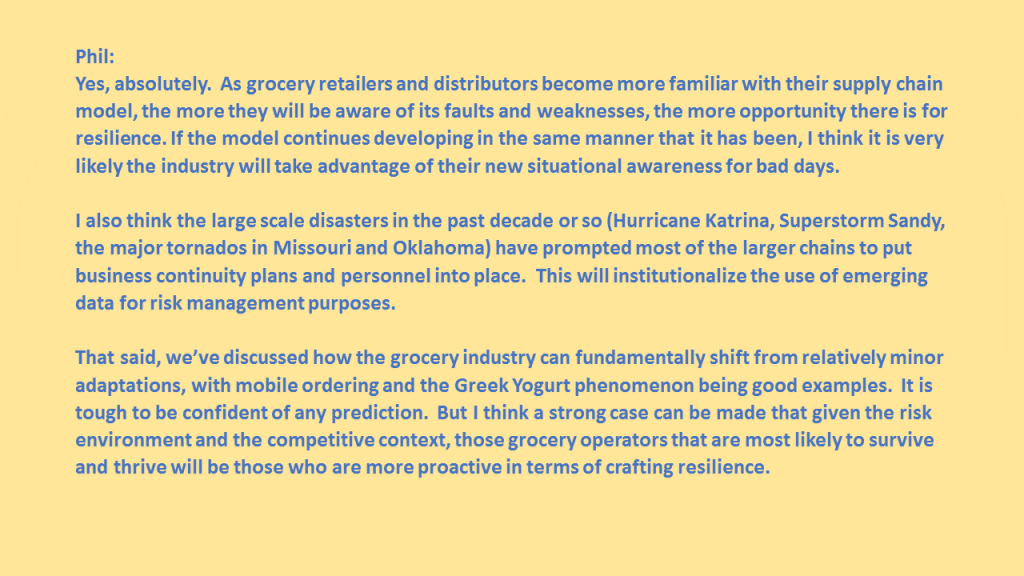CONTRIBUTE TO THE CONVERSATION HERE »
In the inaugural essays for Fractus, it is argued that disruption emerges from particulars of time and space. Fundamental physics is tough to dismiss (though some might try). It is also claimed, the specific character of any disruption reflects innate complexity and unpredictable convergence among multiple variables.
Some could perceive grim inevitability: Self-Organized Criticality constantly accumulating. Catastrophic collapse only a matter of time. We might be better or worse prepared to pick up the pieces, but prevention and even meaningful mitigation may be beyond our capacity — all this is a potential strategic implication.
Yet self-organization is also the way that networks and systems adapt to changing conditions and become resilient. Is it possible to purposefully shape self-organization to reduce catastrophic potentiality?
Following are two independent angles on network-related realities. Only one even briefly mentions supply chains, but if these analyses are correct, there are important insights for any network that we design, build, and manage.
Ted G. Lewis was quoted in the inaugural essay on Disruption: “Self-organization increases system risk by reducing resiliency as SOC [Self-Organized Criticality] transforms a system from a non-critical to a critical state.” But in this conversation he also explains how this need not always be a negative.
Brian Walker is an ecologist now associated with the Commonwealth Scientific and Industrial Organisation (Australia) and the Stockholm Resilience Centre. Starting from a very different place than Dr. Lewis, he seems to arrive at similar insights, arguing, “Resilience is maintained by disturbing and probing the boundaries…”
Both Dr. Lewis and Dr. Walker might be interpreted as merely saying the second law of thermodynamics generally applies: In any cyclic process entropy will either increase or remain the same. Change is opportunity. Stasis is death. How do we best claim opportunity?
What — if anything — does this suggest for the design and management of contemporary and future supply chains?
conversation
noun, mid 14c., “living together, having dealings with others,” also “manner of conducting oneself in the world;” from Old French conversation, from Latin conversationem (nominative conversatio) “act of living with,” noun of action from past participle stem of conversari “to live with, keep company with, “literally “turn about with,” from Latin com- “with” + vertare, frequentative of vertere.
AN OLD PRACTITIONER CONVERSES WITH A YOUNG SCHOLAR
Philip J. Palin is the executive editor of Fractus. He is the son and grandson of grocers. Now semi-retired, he works with a number of organizations engaged in distribution of water, food, pharmaceuticals, medical goods, and fuel under duress.
Jillian Rucker is a doctoral candidate in Management specializing in supply chain management at Rutgers University. She is currently engaged with the US Resiliency Project to develop a report on Best Practices in Supply Chain Risk Management for the National Institute of Standards and Technology.








